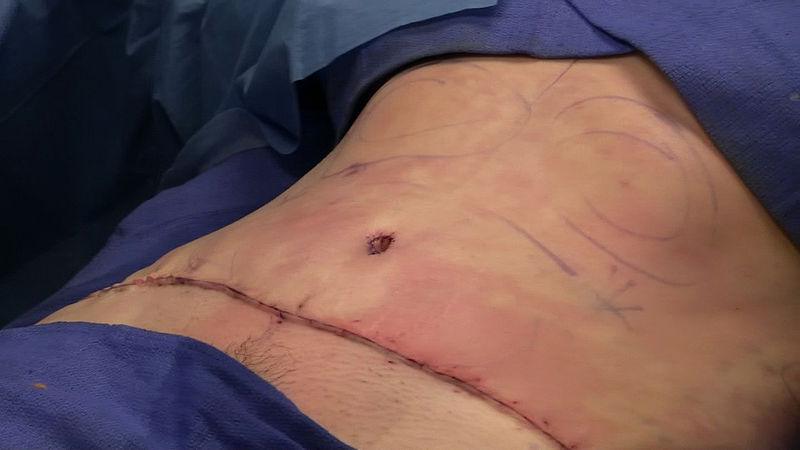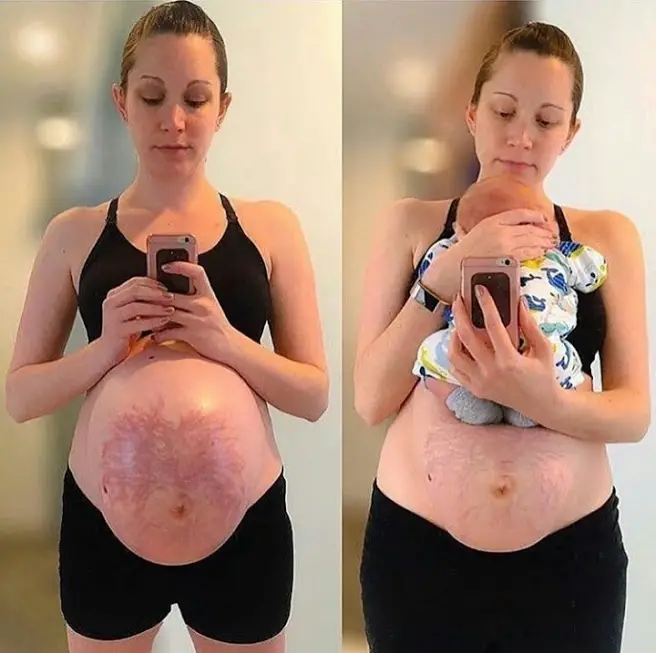While a chemical peel works wonders, taking care of your skin after a chemical peel makes all the difference. Let’s discuss ways to care for skin after a chemical peel.

Table of Contents
How to Take Care of Your Skin after Chemical Peel
Here are ways to take care of your skin after undergoing a chemical peel:
1. Wash with Only Cool Water
Cool water does wonders for your skin after going through a chemical peel. The skin is sensitive, so it does not need irritation. Hot water will irritate the already sensitive skin. Warm water may not be as harsh as hot water, but it won’t be as soothing as cool water.
2. Don’t Strain the Skin
Keep from engaging in any exercise that will encourage the flow of blood to the skin. An increase in blood flow intensifies tingling, redness, warmth, and even itching. These sensations are quite uncomfortable and can have adverse effects on the skin when it is sensitive.
Exercises in whatever form, going to the spa, and using a steam room or sauna are some of the activities that encourage blood flow. It also helps to keep sweating to a minimum. If you must work out, keep the routine light and short.
3. Use Sunscreen
Staying out from under the sun is part of the best treatment for skin after a chemical peel. Give it at least 24 hours before venturing out. But if you have to go out, use protective clothing and use sunscreen.
Get a sunscreen with SPF 30 or more, and ensure it is a broad-spectrum type. Broad-spectrum sunscreen protects from both UVA and UVB rays. So, your skin will benefit from the proper sun protection.
4. Don’t Exfoliate
A chemical peel is an exfoliant at its strongest. That is why the skin feels a little raw after the treatment. Therefore, you would be overdoing it and stressing your skin if you exfoliate immediately after a peel.
Allow a few days to pass – about four days – before trying to exfoliate. Don’t rush it; let your skin recover at its own pace. When you think you are up to it, use a light exfoliant. Discontinue use if your skin reacts adversely.
5. Keep Your Skin Hydrated
The barrier that naturally protects your skin becomes compromised when you undergo a chemical peel. That is why building the barrier as much as possible is vital, and using an oil-based moisturizer helps you do that.
To further help boost your skin’s barrier and protect it, drink a lot of water. Proper hydration also helps prevent dry skin and promotes suppleness.
6. Don’t Use Acidic Skincare Products
Avoid retinoids, tretinoin, or any skincare product that contains vitamin C, benzoyl peroxide, salicylic acid, glycolic, lactic, and tartaric acid. Also, avoid skin-lightening skincare products because they contain hydroquinone, which strips the skin even further.
In addition to the above, don’t dye your hair after a chemical peel, especially if the peel is around your neck and face. Give yourself about three weeks after the peeling before dyeing the hair.
Itchy Skin after a Chemical Peel – What to Do
Itchy skin after a chemical peel is part of the process. As the old, dull, and damaged skin cells fall away to reveal new and better skin, your skin tends to get dry, tight, and itchy. You may feel the need to scratch, but you may cause injuries on already-sensitive skin. Therefore, allow your skin to go through the process naturally. The itchiness will ease with time.
But if your skin continues to feel itchy weeks after the chemical peel treatment, visit your doctor. There may be a skin condition developing and which needs immediate attention.
Skin Purging after a Chemical Peel – Treatment
A skin purge after a chemical peel is typical and part of the process, especially when you first begin. While the skin may look clear and healthy, there may be pigmentation and bacteria under the skin’s surface. Once you start peeling, the issues come up quickly.
Things will get worse before they get better. So, allow your skin to go through the purging phase. Use mild cleansers that won’t aggravate the skin, and use them regularly. They may help lessen the occurrence of breakouts.
Pink Skin after a Chemical Peel – What It Means
If you have pink skin after a chemical peel, it is part of the procedure. Your skin, which is freshly rejuvenated, looks pink. It will continue to look like that for a few weeks, but it depends on the depth of the peel.
Your skin will slowly return to normal, and you can use makeup and other skincare products. However, you should get clearance from your dermatologist before using any product or wearing makeup. Otherwise, you risk irritating your skin and causing other adverse reactions.
Brown Skin after a Chemical Peel – Treatment
Brown skin after a chemical peel is called hyperpigmentation. You will find the skin looking darker than its usual color. It is one of the risks you encounter with chemical peels, especially if your skin tone is naturally dark. The skin color change may be permanent, but you can try correcting it.
Use retinoic acid with hydroquinone, 0.05% and 4% respectively, every day for about three weeks. If there is still visible hyperpigmentation after the time elapses, continue using the products.
In addition, use sunscreen with an SPF of not less than 30. Use it generously whenever you are going out under the sun. And if you have an adverse reaction to the retinoic acid, counter it with hydrocortisone cream.
Note that you can prevent hyperpigmentation after a chemical peel. Before going for a chemical peel, use bleaching skincare products for a few weeks. Avoid going out under the sun without adequate protection, both in the form of sunscreen and protective clothing.
Click here to read these interesting articles…
Skin After Weight Loss [Problems & Solutions]
Skin After Acne [Problems & Solutions]
Skin After Allergic Reaction [Problems & Solutions]
After Skin Needling [Problems, Solutions & Care]
Skin After a Facial [Problems, Solutions & Care]
Bumpy Skin after a Chemical Peel
Bumps on the skin after undergoing a chemical peel may be a reaction to the acid used for the peel. You may notice them if you had a deep peel with a skin condition called contact dermatitis. Visit your dermatologist with the skin concerns, so you can commence treatment as quickly as possible if there is an infection.
Skin Burn after a Chemical Peel – Treatment
If your skin burns after a chemical peel, apply some ice to the area as soon as you can to soothe it. Then, use emollients to moisturize and topical steroids to reduce skin inflammation. You can also try calamine lotion to help the skin further.
Skin burn is a common side effect of a chemical peel if you have sensitive skin. It may last a few days after the procedure. But if the burn continues into weeks, see a dermatologist.
Dry Skin after a Chemical Peel – How to Treat
Skin dryness after a chemical peel is part of the process, but you can tone it down. Follow the skincare regimen prescribed by your dermatologist as after-peel care. Also, use sunscreen and a light moisturizer, nothing too heavy.
Over-moisturizing the skin to alleviate dryness may not solve the problem. If anything, it may make matters worse. After a skin peel, your skin is sensitive, and applying products in increasing measure only worsens the situation.
Therefore, use as few skincare products as possible. Give your skin time to heal naturally before going back to your routine. That way, you don’t further irritate it.
Skin Didn’t Peel after a Chemical Peel
Whether or not your skin peels after a chemical peel will depend on the skin’s condition before the procedure. Your skin may be peeling only when you are taking a bath, so you are unaware of it. The reason is that skin types differ and, though it is rare, you may not see a ready peeling of the skin where others do.
Dry skin tends to experience more peeling than other skin types. And a deeper chemical peel will lead to extensive skin peeling than a superficial or medium one.
As long as the procedure is expertly and correctly done, no peeling of the skin does not mean it is ineffective. Give your skin tome and watch for results. That will let you know whether or not you need to go back to the doctor.
Should You Exfoliate after a Chemical Peel?
You should wait a few days to a week, sometimes more, after a chemical peel before exfoliating. You can also wait for clearance from your doctor if you are not sure when to resume your everyday skincare routine.
Exfoliating immediately after a chemical peel will adversely affect your skin. Chemical peels leave the skin sensitive, and since exfoliation is a mild form of skin peeling, you would be removing more skin layers and leaving your skin even more vulnerable.
Does a Chemical Peel after Skin Needling Work?
Don’t undergo a skin peel procedure immediately after micro-needling. And don’t needle the skin immediately after a chemical peel. If you must undergo a micro-needling procedure after a chemical peel, do it after about six weeks of the skin peel.
Do note that a combination of micro-needling after a chemical peel can work wonders for your skin. The peel deeply exfoliates the skin’s top layer. Then, the skin needling boosts the production of collagen deep in the skin. You will see the results better and faster.
Recap
Your skin after a chemical peel is a bit sensitive, so it needs the best care. It is important to pamper it and follow your doctor’s instructions for after-peel care. Keep from using any product that may be harsh or contain chemicals, no matter how good. Give your skin some time to heal considerably before returning to regular products. And if you notice any adverse reactions, notify your doctor immediately.
Skin after a Chemical Peel – FAQs
Skin Infection after a Chemical Peel – Treatment
There may be a microbial infection after a chemical peel. In such a case, visit a doctor to determine the best treatment for the infection.
Removing Dead Skin after a Chemical Peel
Don’t try to remove the dead skin after a chemical peel. Allow it to peel naturally; rubbing or exfoliating the skin so soon after the peel will irritate it. It is a natural process, and it may be over a week after the procedure.

